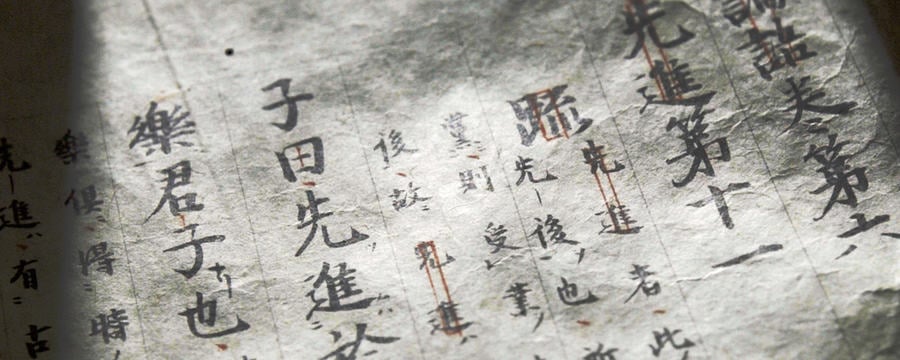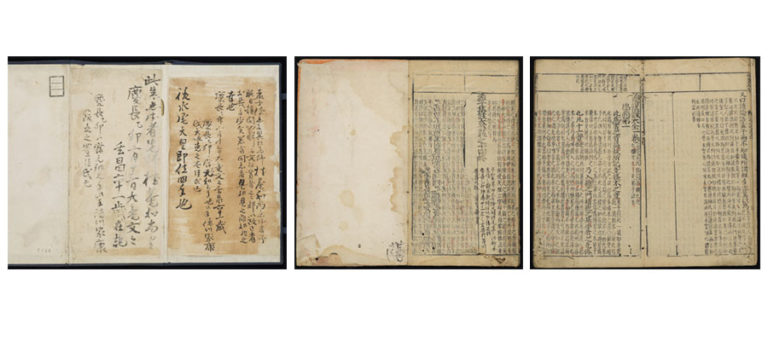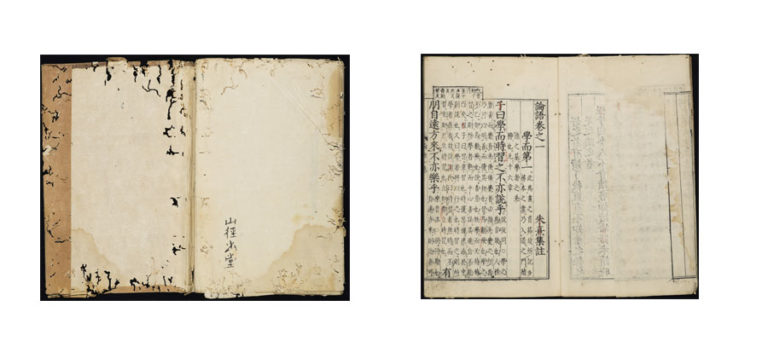Home / History / Social History / Sino-Japanese Interactions Through Rare Books / Muromachi Culture and Reading Marks
This article is from the free online
Sino-Japanese Interactions Through Rare Books


Reach your personal and professional goals
Unlock access to hundreds of expert online courses and degrees from top universities and educators to gain accredited qualifications and professional CV-building certificates.
Join over 18 million learners to launch, switch or build upon your career, all at your own pace, across a wide range of topic areas.

 Fig.1 Shisho Taizen (The Complete Four Books) 『四書大全』
Fig.1 Shisho Taizen (The Complete Four Books) 『四書大全』 Fig.2 Takenaka Shigekado’s copy of the Analects (Shisho shicchū) 『四書集注』
Fig.2 Takenaka Shigekado’s copy of the Analects (Shisho shicchū) 『四書集注』 Fig. 3 What are reading marks (kunten)?
Fig. 3 What are reading marks (kunten)?





